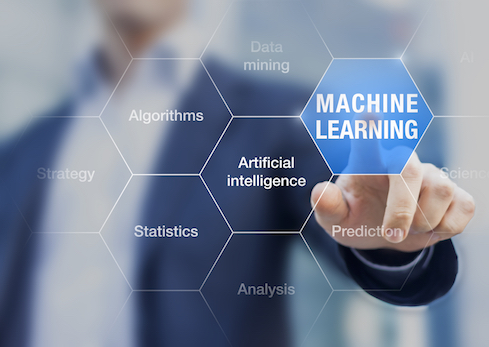
Imitation learning is closely related to observational learning, a behavior exhibited by infants and toddlers. Imitation learning is also an umbrella category for reinforcement learning, or the challenge of getting an agent to act in the world so as to maximize its rewards. Bayesian or probabilistic models are a common feature of this machine learning approach. The question of whether imitation learning could be used for humanoid-like robots was postulated as far back as 1999. Imitation learning has become an integral part of field robotics, in which characteristics of mobility outside a factory setting in domains like domains like construction, agriculture, search and rescue, military, and others, make it challenging to manually program robotic solutions. Examples include inverse optimal control methods, or “programming by demonstration,”which has been applied by CMU and other organizations in the areas of humanoid robotics, legged locomotion, and off-road rough-terrain mobile navigators.
WannaCry and NotPetya inspiring new attacks

Cyber crime is a business, and market forces, such as the rise in cryptocurrency values, will continue to shape where adversaries focus their efforts,” said Raj Samani, McAfee fellow and chief scientists. “Cryptomining malware is simpler, more straightforward, and less risky than traditional cyber crime activities – causing these schemes to skyrocket in popularity over the last few months. In fact, cryptomining malware has quickly emerged as a major player on the threat landscape. “Organisations need to remain vigilant to these threats – particularly in today’s cloud-first landscape, when many companies are seeing a rapid increase in cloud applications and environments to secure,” he said. To keep crypto-criminals at bay, Samani said businesses must find the right combination of people, process and technology to protect their assets, detect cryptomining threats and, when targeted, rapidly correct systems in the cloud and on-premise.
How Enterprises Can Scale their Machine Learning

"To support the explosion of enterprise use cases, teams need to get bigger and, simultaneously, predictive analytics and machine learning tools need to support these teams as well as the larger community of business people, data engineers, software developers, and AI engineers." Forrester predicts that "massive machine learning automation is the future of data science because it will make data science teams exponentially more productive." The report says that the CRISP-DM process is too sequential and too manually iterative to perform the job. Tools to realize this future productivity will incorporate a few other elements as well. They need to integrate with software development and continuous integration tools. That's important for the AppDev teams to be able to use this work in their design, development and application deployment efforts. And second, these tools must keep up with open source innovations, such as deep learning, Forrester said.
How Java EE development has kept up with microservices

In 20 years, Java EE development has gone through several iterations and added many new features. For instance, open source projects, like Hibernate and Spring, were designed to sit on top of Java EE and address initial shortcomings with specifications, particularly in the area of persistence. "Java EE grew to include functionality from these projects to maintain its appeal to developers," said Simon Ritter, deputy CTO of Azul Systems, a Sunnyvale, Calif.-based company that develops runtime platforms for executing Java-based applications. "Likewise, when web services became a popular technology, Java EE was expanded to include this." Enterprise application development teams are still in the early stages of microservices architecture adoption. However, the Java EE specifications did not provide support in time, Ritter said. As a result, the Eclipse Foundation developed the MicroProfile specification outside the Java Community Process.
A CTO guide: Cyber security best practice tips

“You need to make sure you’re on the latest technology and keep systems patched and up-to-date. The WannaCry was a good example of that. With many of the systems that got breached, the threat vector was a vulnerability that should have been patched.” “Organisations that keep their technology on the latest version and on the latest patch go a long way to keeping their systems protected. So, before I even start talking about advanced threat protection and some of the more clever sophisticated stuff, doing the basics right, getting that hygiene right is vitally important.” ... “The second aspect is that most breaches come via credential compromise of some form. It doesn’t come from a zero-day vulnerability on the backend, hacking a server. It comes from credential theft or some other form of brute force password guessing.” “There’s a variety of phishing attacks, and a breach often comes from compromise in the user credentials. Once the user credentials are compromised, then the attacker can traverse internally, laterally across the network and get access to more stuff.”
10 Ethical Issues Of Artificial Intelligence And Robotics
Existing laws have not been developed with AI in mind, however, that does not mean that AI-based product and services are unregulated. As suggested by Brad Smith, Chief Legal Officer at Microsoft, "Governments must balance support for innovation with the need to ensure consumer safety by holding the makers of AI systems responsible for harm caused by unreasonable practices". Policymakers, researchers and professionals should work together to make sure that AI and robotics provide a benefit to humanity. ... Should robots have rights? If we think of a robot as an advanced washing machine, then no. However, if robots were able to have emotions or feelings, then the answer is not that clear. One of the pioneers of AI, Marvin Minsky, believed that there is no fundamental difference between humans and machines, and that artificial general intelligence is not possible without robots having self-concious emotions.
Cities Paying Ransom: What Does It Mean for Taxpayers?

On September 1, Ontario’s Municipal Offices experienced a cyberattack that left their computers inoperable when Malware entered its systems and rendered its servers useless. The municipality was faced with paying a ransom to the attackers or face the consequences of being locked out of its systems. Per the advice of a consultant, the city paid an undisclosed amount of ransom to its attackers. ... Only a couple months earlier, the Town of Wasaga Beach in Ontario, faced the same issue and paid one bitcoin per server. It spent 11 Bitcoins, valued at the time at $144,000, to regain control of 11 servers. The town negotiated with the attackers to reduce the price to $35,000. After paying the ransom, Wasaga Beach assessed the damages to its city at $250,000 for loss of productivity and reputation. This scenario has become commonplace today. Cities, municipalities, and government agencies have all experienced ransom attacks. But ultimately taxpayers are the ones that pay the bill for these cyberattacks.
6 Ways To Set Expectations For Artificial Intelligence For Everyone In The Business
Artificial intelligence, in many ways, is a different animal from technology waves that have crashed through enterprises over the years. that have gone before. For starters, while some nontrivial investments need to be made to put AI in place -- including talent -- hard business results may not be so immediately apparent. Still, anyone who has spent time selling technology to the C-suite or board will recognize some of the challenges seen with AI, and apply some of that learning. With this in mind, Whit Andrews of Gartner has assembled a set of recommendations for selling AI to the business at large, along with an explanation of what's different this time around, and what's not. The challenge, he explains, is many AI approaches may take time to deliver to their full potential. This typically isn't how business units set their budget priorities. The challenge is to teach and encourage business leaders and end-users need to think big, and to think long-term when it comes to AI.
A new ARM-based server processor challenges for the data center

Ampere isn’t exactly starting from scratch. It acquired the X Gene Arm server processor business from MACOM, which in turn acquired that business from Applied Micro, which started out with its ARM server business back in 2011. The initial releases, the X-Gene 1 and X-Gene 2, weren’t terribly impressive; only eight cores running at 2.4 GHz. Work had begun on the X-Gene 3 chip, codename “Skylark,” but was not completed when the company got passed around. Once Ampere picked up the pieces, it ran with what it had. Ampere has given the X-Gene 3 chip, now known as eMAG, quite a boost. It has 32 cores running at 3.3GHz with L2 and L3 cache hierarchy, integrated SATA I/O ports and 42 lanes of PCI-Express 3.0 peripheral bandwidth across eight controllers. The chip also includes twice as many memory channels, eight per socket, which doubled the memory capacity up to 1TB per socket and doubled the bandwidth. Ampere also has a 16-core chip in the works.
Why Was Equifax So Stupid About Passwords?
In this day and age, there is no excuse for developers to be using live data in testing environments. Substituting fake but lookalike data isn't a new concept. Arguably, it dates from the heady "greeking" days of the 1500s, when printers and typesetters began using "lorem ipsum" - nonsensical Latin - as placeholder text. Enter the digital age: Developers need to ensure that when users enter a value into a 16-digit credit card field, for example, their application handles it correctly. But playing with live data in production environments increases the risk that insiders or outsiders who shouldn't be seeing the data might have access to it. That's why numerous development tools offer the ability to obfuscate and mask live data, as well as to generate "good enough" test data that developers can use instead. European IT market researcher Bloor Research notes that such tools are available from a variety of vendors, including CA, Compuware, Dataprof, Dataguise, Delphix, HPE, IBM, Imperva Camouflage, IMS Privacy Analytics, Informatica, Mentis, Net 2000, Protegrity and Solix.
Quote for the day:
"To work effectively as an agent of change in a pluralistic society, it is necessary to be able to connect with people different from oneself." -- Beverly Daniel Tatum
No comments:
Post a Comment